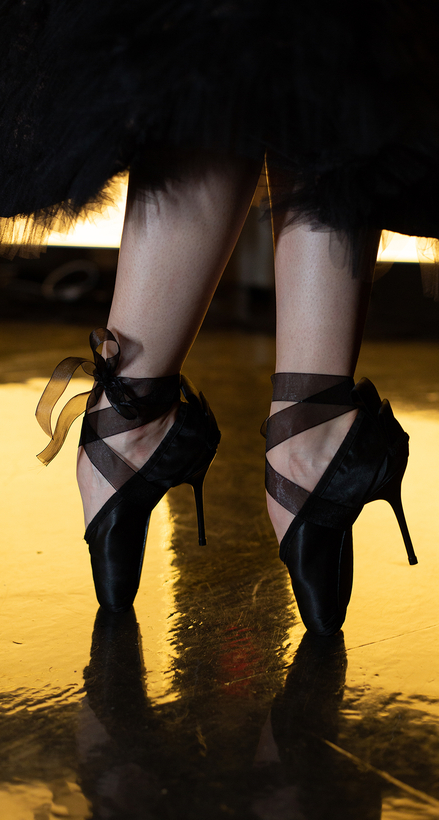I have always loved ballet. Cherished childhood lessons grew into an infatuation thanks to the international stars I saw perform during my teens. Adult demands, however, redirected my energies toward business, and then fashion history, and my ardor for ballet slumbered. For decades, my eyes skimmed over the midcentury evening dresses—fitted satin bodices, voluminous tulle skirts—that filled the fashion editorials and museum costume collections I studied in depth. Quietly these beautiful images and garments assembled themselves in my subconscious. About three years ago, I began to ponder how modern fashion came to appropriate these elements of the classical ballerina’s raiment. And why?

My awakening was the serendipitous discovery of an essay by the brilliant Lincoln Kirstein, published in a 1933 issue of Vogue magazine. Ballet, he wrote, had “a glamour, a romantic pungency, unsurpassed by any other art form.” He also believed that Diaghilev’s Ballets Russes had exerted “a profounder effect on the worlds of painting, music, fashion, and decorative arts than any other single influence.” Eureka! The article was a clarion call that illuminated my subliminal cache and inspired my latest exhibition—opening on February 11 at the Museum at F.I.T.—“Ballerina: Fashion’s Modern Muse.” This idea now seems obvious to me. But because no major study on the subject had ever been undertaken, it took Kirstein’s words to crystallize my thesis. Classical ballet’s impact on high fashion had finally arrived.
In fact, in the 1930s a one-sided, centuries-old practice, which saw ballet costumes appropriating the latest civilian trends, stopped. The tutu was now waving its wand over high fashion. Designs that invoked—and often were named for—swans and sylphs and fairies, especially The Sleeping Beauty’s Lilac Fairy, pervaded couture collections. (In the early 40s, during World War II, ballerina-style shoes and sleek leotards would make their ready-to-wear debut.) Meanwhile, ballerinas such as Tamara Toumanova, Vera Zorina, and Sono Osato began to appear regularly in Vogue and Harper’s Bazaar, modeling the latest modes, a phenomenon that lasted for the next 50 years. No longer relegated to the margins of society, the ballerina had become a revered, inspirational, and mainstream figure of glamour and beauty, as well as a spirit who inherently understood the transformative power of dress. Thanks to Kirstein, she became a curator’s muse, too. —Patricia Mears

